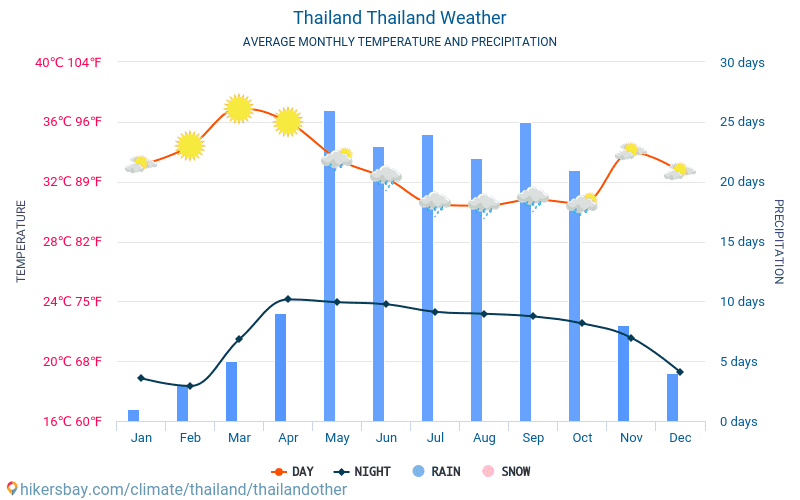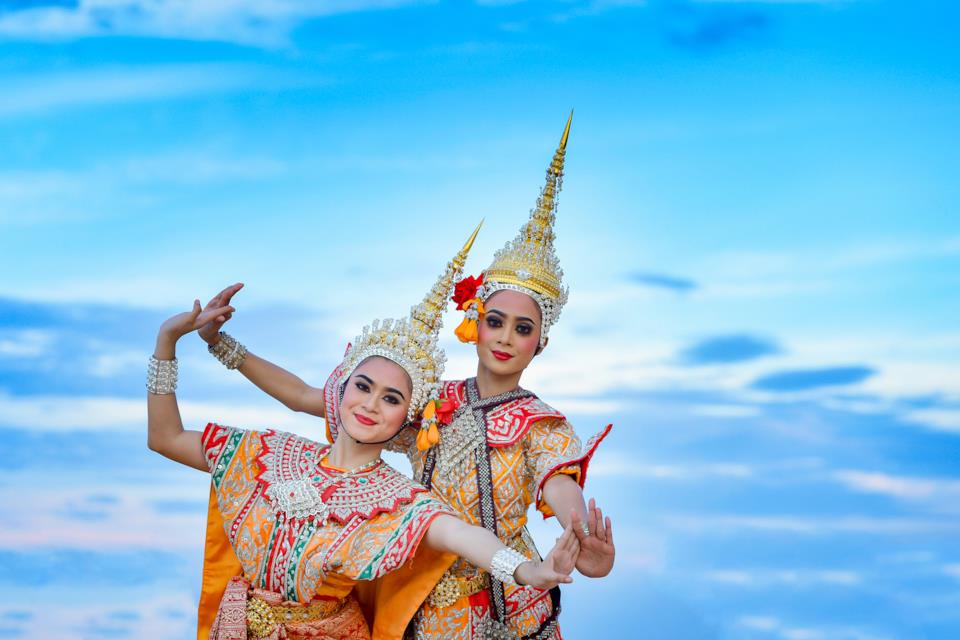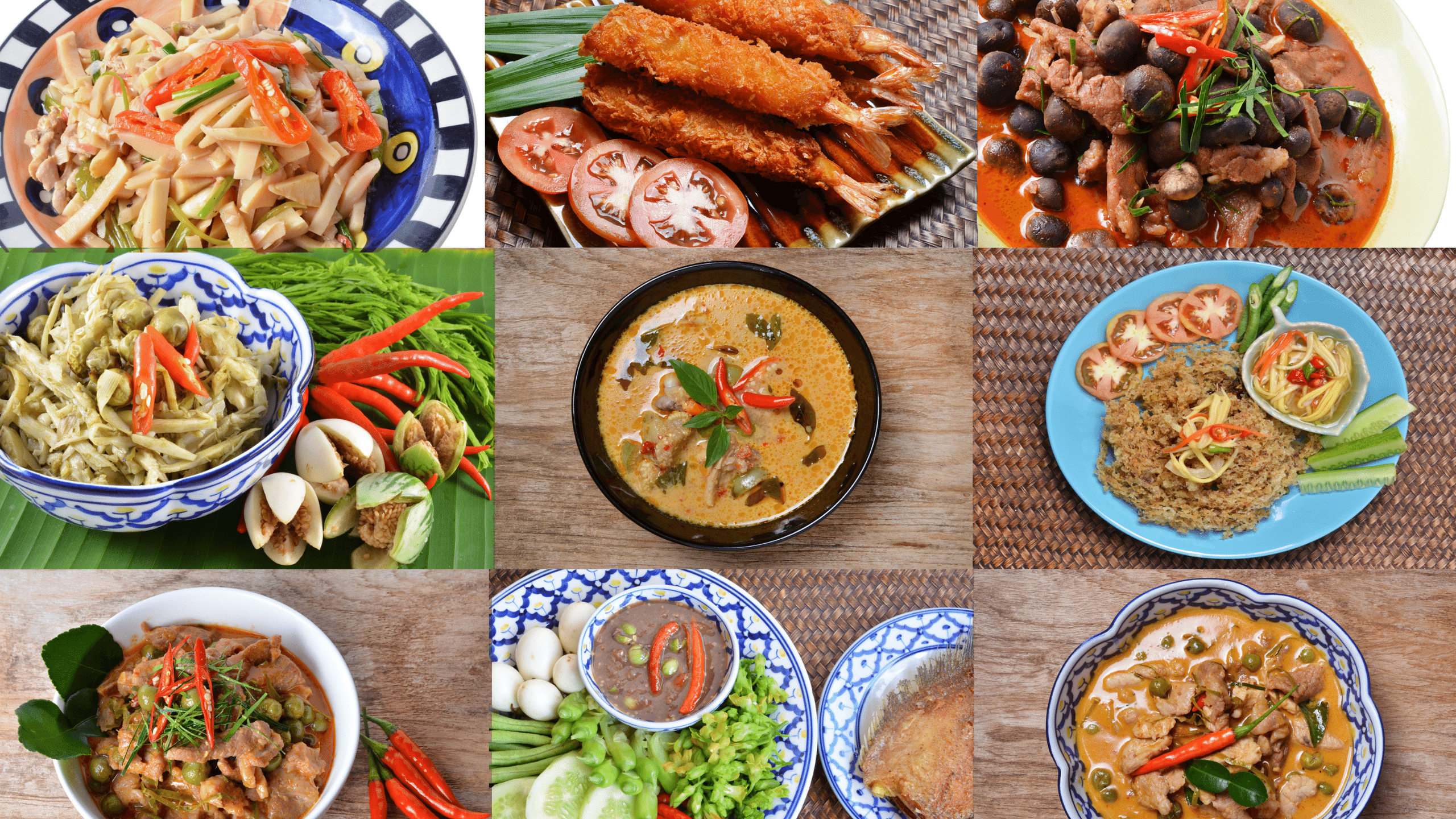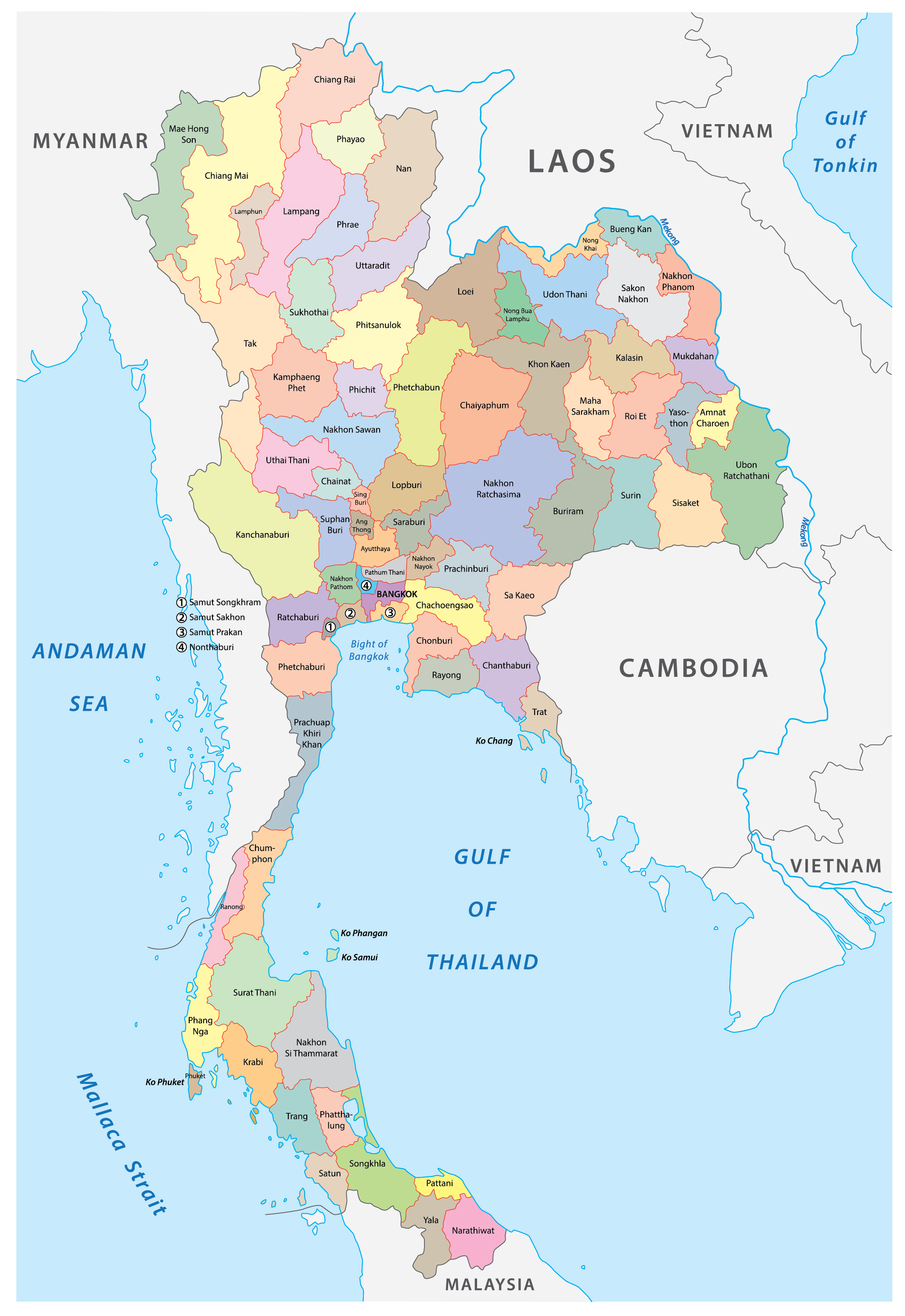Thailand, historically known as Siam and officially the Kingdom of Thailand, is a country in Southeast Asia, located at the centre of Indochinese Peninsula, spanning 513,120 square kilometres (198,120 sq mi), with a population of almost 70 million. The country is bordered to the north by Myanmar and Laos, to the east by Laos and Cambodia, to the south by the Gulf of Thailand and Malaysia, and to the west by the Andaman Sea and the extremity of Myanmar. Thailand also shares maritime borders with Vietnam to the southeast, and Indonesia and India to the southwest. Bangkok is the nation's capital and largest city.
It's known for tropical beaches, opulent royal palaces, ancient ruins and ornate temples displaying figures of Buddha. In Bangkok, the capital, an ultramodern cityscape rises next to quiet canalside communities and the iconic temples of Wat Arun, Wat Pho and the Emerald Buddha Temple (Wat Phra Kaew). Nearby beach resorts include bustling Pattaya and fashionable Hua Hin.
The people of Thailand are called Thais, which can refer both to the citizens of Thailand and ethnic Thais, who are related to ethnic Lao in Laos. There are over 67 million people in Thailand (estimated 2012).
Currency
The baht is the official currency of Thailand. It is divided into 100 satang. The issuance of currency is the responsibility of the Bank of Thailand. SWIFT ranked the Thai baht as the 10th most frequently used world payment currency as of January 2019.

Climate
The climate of Thailand is tropical, with three distinct seasons:
- a hot season from March to mid-May;
- a rainy season due to the southwest monsoon, which generally runs from mid-May to October;
- a dry and relatively cool season from November to February, when the north-east monsoon, coming from the Asian continent, prevails. However, the relatively cool season is felt in the north and in inland areas, while on the coasts and in the south it's hot even in winter.
In northern Thailand the seasons are clearly defined. Between November and May the weather is mostly dry, however this is broken up into the periods November to February and March to May. The later of these two periods has the higher relative temperatures as although the northeast monsoon does not directly affect the northern area of Thailand, it does cause cooling breezes from November to February.
The other northern season is from May to November and is dominated by the southwest monsoon, during which time rainfall in the north is at its heaviest.
The southern region of Thailand really has only two seasons -- the wet and the dry. These seasons do not run at the same time on both the east and west side of the peninsula. On the west coast the southwest monsoon brings rain and often heavy storms from April through to October, while on the east coast the most rain falls between September and December.
Overall the southern parts of Thailand get by far the most rain, with around 2,400 millimetres every year, compared with the central and northern regions of Thailand, both of which get around 1,400 millimetres.
Best Time to Visit
Generally speaking, the best time to visit Thailand is from November to February when the northeast monsoon is blowing cool, dry air that serves as a respite from the heat. During this cool season, the temperature ranges from 18 to 32 degrees Celsius in Bangkok, while in northern and northeast Thailand, temperatures can get quite cool with morning temperatures as low as eight to 12 degrees Celsius with the occasional 20 degree day. Nights can be particularly chilly and at high altitudes the temperatures can and do drop below freezing. The summer period, or hot and dry season, is from March to June. At this time temperatures in Bangkok average around 34 degrees, but can often reach 40 degrees with humidity levels of 75%. Try and avoid April, unless you plan to be permanently submerged in the ocean, because this is the hottest month across the country. From July to October is the monsoon, when most of Thailand's annual rainfall is accumulated and flooding can ravage the country. The humidity averages just under 90%, with temperatures averaging around 29 degrees Celsius in a very wet and rainy Bangkok. The monsoon finishes when the wind direction changes, bringing dry weather from the northeast. At best this season can be described as unpredictable and not the constant downpour of rain like you may expect. The middle months of this season may hold particularly heavy rains for the north of the country.

Culture

Cuisine
Thai cuisine ahan thai, is the national cuisine of Thailand. Thai cooking places emphasis on lightly prepared dishes with strong aromatic components and a spicy edge. Australian chef David Thompson, an expert on Thai food, observes that unlike many other cuisines, Thai cooking is "about the juggling of disparate elements to create a harmonious finish. Like a complex musical chord it's got to have a smooth surface but it doesn't matter what's happening underneath. Simplicity isn't the dictum here, at all." Traditional Thai cuisine loosely falls into four categories: tom (boiled dishes), yam (spicy salads), tam (pounded foods), and gaeng (curries). Deep-fries, stir-fries, and steamed dishes derive from Chinese cuisine. In 2017, seven Thai dishes appeared on a list of the "World's 50 Best Foods", an online poll of 35,000 people worldwide by CNN Travel. Thailand had more dishes on the list than any other country: tom yam goong , pad thai , som tam, massaman curry , green curry, Thai fried rice and nam tok mu

Thailand do’s
- Do respect Thai culture.
- Do dress respectfully when visiting temples and palaces. Knees and shoulders should be covered.
- Do respect all Buddha images. Buddha images are sacred in Thailand and are not to be climbed or sat on.
- Do stand up when you hear the national anthem or royal anthem. You may hear the Thai national anthem in public spaces (train stations, bus stations, markets etc.) at 8am and 6pm each day. Take your cue from others around you and stop what you are doing and stand still. If you are in a cinema, the royal anthem is usually played before the film and you should join everyone else in standing for this.
- Do take off your shoes before entering temples and people’s homes. This can sometimes apply to shops too, so look for signs outside. If you see shoes already lined up outside, take yours off before going inside.
- Do smile! It may sound trite, but a smile can go a long way in establishing good intent and that will be appreciated in Thailand.
- Do adopt a mai pen rai attitude. When you are in Thailand you will hear the expression ‘mai pen rai‘ a lot. It translates as ‘no problem’ or ‘don’t worry about it’. Follow the Thai lead and don’t worry about the small stuff and enjoy your time in Thailand.
- Do return a wai. There are lots of subtle rules of etiquette involved with the Thai greeting, the wai. We could write a whole article about when you should or shouldn’t wai and how high the hands should be, but for a first time visitor to Thailand if a Thai person wais you, place your palms together, raise your hands towards your chin and return the wai with a smile.
Thailand don’ts
- Don’t expect things to be done the same way in Thailand as they are in the UK or Ireland. Retain your sense of humour and go with the flow.
- Don’t take things too seriously. In Thai culture there is a concept known as ‘sanuk‘. Broadly speaking, it’s the idea of having fun and taking enjoyment out of everything you do.
- Don’t point to anything with your feet and don’t place your feet on the table while sitting. If you accidentally drop some money, don’t step on it to stop it blowing away. This would be insulting the King whose image is on Thai currency.
- Don’t stand on the raised threshold of a house or temple. Traditional Thai belief says this is where the guardian spirits reside and to show respect and avoid disturbing them, you should step over the threshold.
- Don’t raise your voice. In Thai culture, keeping calm and not raising your voice are qualities that are admired. Shouting and getting angry won’t do you any favours.
- Don’t touch monks. Women should never touch a monk or hand anything directly to them.
- Don’t show disrespect to the Thai royal family. Thailand has strict laws on this which also cover social media.
- Don’t take Buddha images out of the country. Although it is allowed in some cases and if a permit has been granted, there are laws about what Buddha images can and can’t be taken out of Thailand. However, stores and market vendors will probably still sell them to you without telling you about the regulations.
- Don’t touch a Thai person’s head. The head is regarded as the most sacred part of the body and shouldn’t be touched. There are exceptions (e.g between lovers, when you go for a head massage, and parents ruffling children’s hair), but generally speaking don’t risk causing offence by touching someone’s head.














